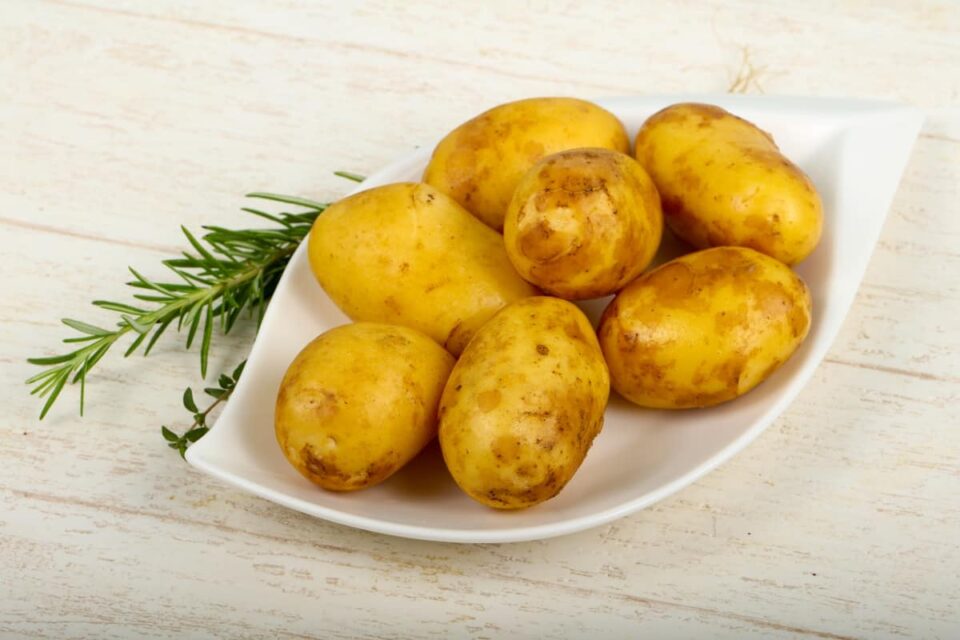When managing diabetes, dietary choices are crucial in maintaining stable blood sugar levels. Among the many foods under scrutiny are potatoes—an often controversial ingredient in diabetic diets. Potatoes, a staple in many diets worldwide, are high in carbohydrates, which raises concerns about their impact on blood sugar levels. However, a closer look reveals that potatoes can be part of a balanced diabetic diet if consumed mindfully. This article explores whether potatoes should be viewed as a friend or foe for individuals with diabetes and provides guidance on how to include them in a healthy eating plan. Although the glycemic index of potatoes suggests they can cause rapid increases in blood sugar, with mindful preparation and portion control, the question of ‘Can diabetics eat potatoes?’ can be answered with a cautious yes
The Glycemic Index And Potatoes
A food’s glycemic index (GI) indicates how rapidly it increases blood glucose levels. Blood sugar levels rise sharply after consuming foods with a high GI, while they rise more slowly and steadily after consuming foods with a low GI. Potatoes, particularly when cooked and eaten in certain forms, often have a high GI. This means they can cause a quick rise in blood glucose levels, which is a significant concern for people with diabetes.
However, not all potatoes are created equal. The GI of potatoes can change from one variety to another and from one cooking method to another. For instance, boiled potatoes generally have a lower GI compared to mashed or fried potatoes. The production of resistant starch, a fiber that aids digestion and glucose absorption, occurs when cooked potatoes are cooled, which further lowers their GI.
Types Of Potatoes And Their Impact
Different types of potatoes have varying effects on blood sugar levels. Here’s a quick rundown:
White Potatoes:
Common in many dishes, white potatoes have a high GI, which can lead to rapid increases in blood sugar. They are best consumed in moderation and prepared in ways that minimize their GI impact.
Sweet Potatoes:
Sweet potatoes generally have a lower GI than white potatoes. They are also rich in vitamins and fiber, making them a better choice for diabetics. The lower GI and additional nutrients make sweet potatoes a more favorable option in a diabetic diet.
Red And New Potatoes:
These types of potatoes have a lower GI compared to white potatoes and can be a better choice for blood sugar management. Their skin is also rich in fiber, which can help with blood sugar control.
Strategies For Including Potatoes In A Diabetic Diet
Portion Control:
Managing portion sizes is essential. Instead of large servings, opt for smaller portions of potatoes and balance them with non-starchy vegetables and proteins.
Cooking Methods:
How potatoes are prepared plays a significant role in their glycemic impact. Boiling or steaming potatoes is preferable to frying. Avoid adding excess fat or high-calorie toppings like butter or cream.
Cooling And Reheating:
Cooking potatoes and allowing them to cool before eating can reduce their GI due to the formation of resistant starch. Reheating these potatoes can further help in managing blood sugar levels.
Combine With Fiber And Protein:
Pairing potatoes with high-fiber vegetables and protein-rich foods can help mitigate their impact on blood sugar. For example, having a serving of boiled potatoes with a side of leafy greens and grilled chicken can create a balanced meal.
Monitor Blood Sugar Levels:
It’s important to monitor how different types and preparations of potatoes affect your blood sugar levels. Individual responses can vary, so keeping track can help you make informed dietary choices.
Alternatives To Consider
Some alternatives to potatoes that can be included in a diabetic diet are:
- Cauliflower: Cauliflower can be used as a low-carb substitute for potatoes in recipes like mash or rice. It has a lower GI and provides essential nutrients.
- Zucchini: As with potatoes, zucchini is a very adaptable vegetable that may stand in for potatoes in a number of different recipes. It’s low in carbs and high in fiber.
- Legumes: Beans and lentils are excellent alternatives. They are high in fiber and protein and have a low GI, making them a great choice for managing blood sugar levels.
Conclusion
Potatoes, while often viewed as problematic for those with diabetes due to their high carbohydrate content and glycemic index, can still have a place in a balanced diet. By understanding the different types of potatoes, their impact on blood sugar, and employing strategies for healthier preparation, individuals with diabetes can enjoy potatoes without compromising their blood sugar management.
The key is moderation and mindful preparation. Opting for lower-GI varieties like sweet potatoes, practicing portion control, and combining potatoes with fiber and protein-rich foods can make them a friend rather than a foe in managing diabetes. Always consult with a healthcare provider or a registered dietitian to tailor dietary choices to your individual health needs and goals.
Ultimately, a well-rounded approach to diet, considering both the nutritional benefits and potential impacts on blood sugar, will support better diabetes management and overall health.

